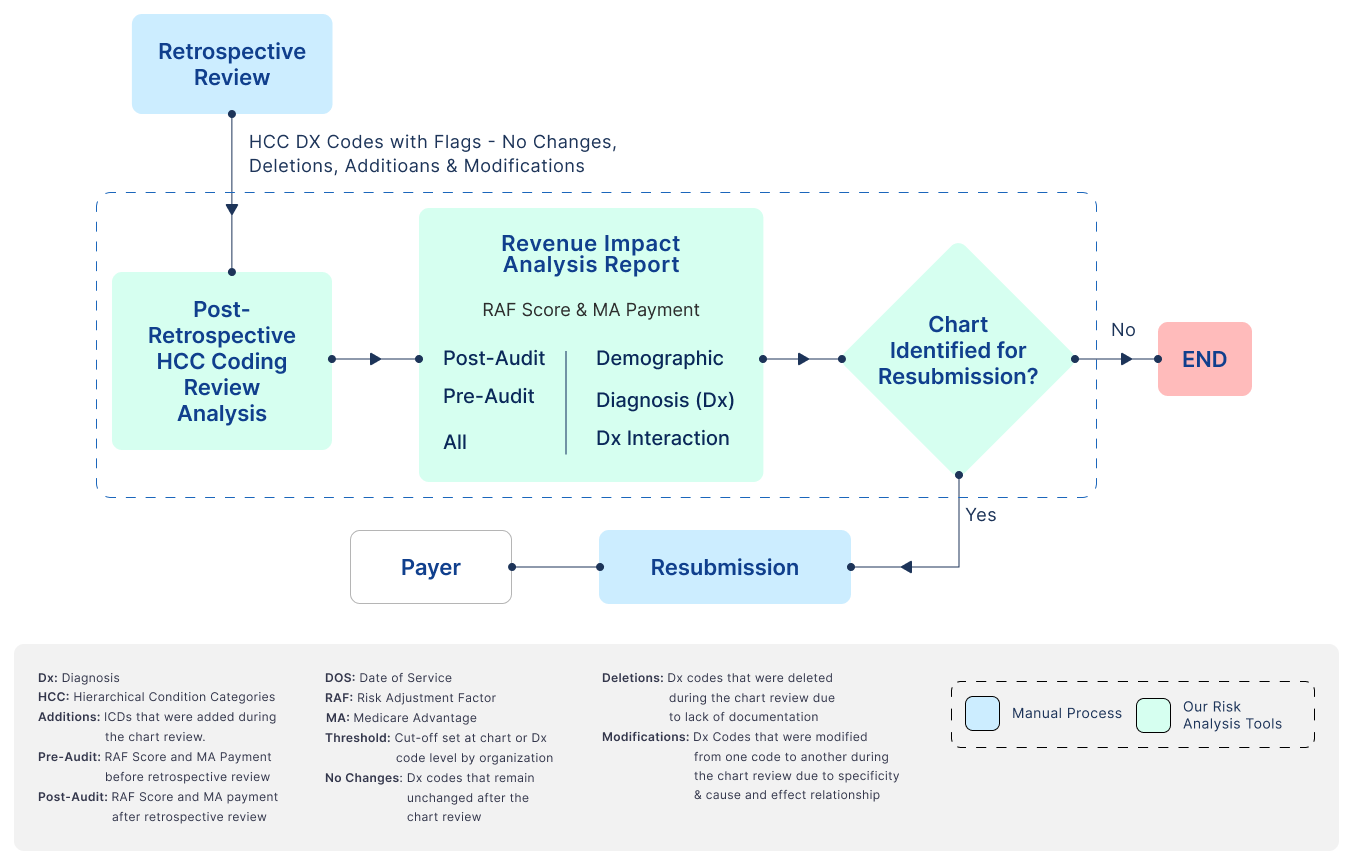Learn how to use HCC RAF Score tools and Get started.
Use Case #3 for our HCC RAF Score Tools
How to identify and exclude low-impact charts to prevent resubmission after retrospective review?
Problem:
In retrospective coding reviews, Risk Adjustment coders are responsible for reviewing patient charts and capturing diagnosis (Dx) codes for addition, deletion, modification, or marking diagnosis codes as no-change along with supporting medical evidence for Hierarchical Condition Category (HCC) conditions. Not all changes in Dx codes result in significant revenue differences. Some new diagnoses may overlap or interact with existing ones, making it essential to determine which charts should undergo resubmission or be dropped after a retrospective coding review. Failing to make this determination accurately can lead to unnecessary resource allocation and system costs associated with submission, follow-ups, and reconciliation.
Our Solution:
To address this challenge, we offer a precise and data-driven solution using our RAF Score and revenue impact analysis tools. These tools enable healthcare organizations to accurately assess the revenue impact of new or modified Dx codes, facilitating confident decision-making regarding whether to submit a chart for resubmission or to ignore it.

Benefits:
-
Cost Reduction:
The primary benefit of our tools is the reduction in costs. Healthcare organizations can avoid unnecessary expenses associated with the submission, follow-up, and reconciliation of charts that have a low revenue impact. This cost reduction directly contributes to improved operational efficiency.
-
Resource Optimization:
By accurately identifying high-impact charts, our RAF Score analysis tools help healthcare providers allocate their resources more efficiently. Instead of spreading resources thinly across all charts, organizations can focus their efforts on those that have a substantial revenue impactë
-
Improved Revenue Capture:
Submitting only high-revenue charts for resubmission increases the chances of capturing additional revenue. This ensures that revenue opportunities are not missed and that the organization's financial performance is optimizede.
-
Time Savings:
Risk Adjustment Coders save valuable time by avoiding unnecessary chart submissions and follow-up processes. This allows them to redirect their time and energy toward more critical tasks, such as patient care and quality improvement initiatives.
Our Tools:
- HCC RAF Score Analysis Post Retrospective Coding
- HCC RAF Batch Scoring Post Retrospective Coding
- HCC RAF Score REST API
Watch the step-by-step HCC Medicare RAF Score Tools Video Demos.
Learn about 5 important use cases where HCC RAF Score tools can be used.

